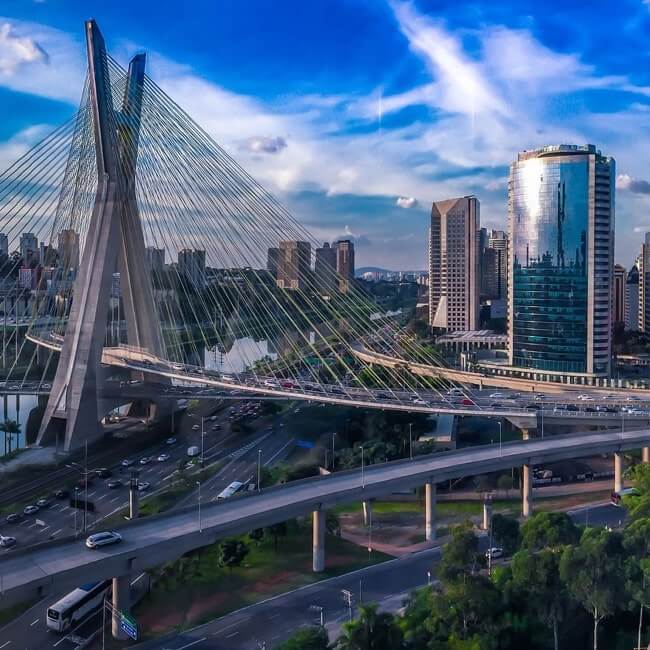Costa Rica faces backlash for 'incomplete' 5G tender

Costa Rica could be the first Central American country to award frequencies for the deployment of 5G, as authorities have confirmed plans to start the bidding process in July.
However, two of the country’s biggest telecom associations have criticized the government for announcing a "partial" or incomplete tender without first securing the necessary spectrum.
According to local telecommunications industry chamber Infocom and technology, information and communications chamber Camtic, the administration of President Carlos Alvarado must hold a “full” 5G auction in the 2.6GHz and 3.5GHz bands, as recommended by international organizations.
The announcement of the tender follows an ongoing controversy over reports that suggest state-owned electricity and telecom company ICE has been refusing to give back spectrum to the State for some four years.
There are also doubts about how the country’s main telecom authorities – regulator Sutel and the science, technology and telecom ministry (Micitt) – would go about deploying 5G given the country’s shortfall in infrastructure and the lack of details about the tender’s requirements and regulations.
Although the government has been strongly criticized for presenting what is seen as a vague roadmap for the next generation of technology, the 5G debate has now intensified, involving public and private sector players.
The plan and its obstacles
In an interview with local daily La Nación last week, Micitt minister Paola Vega Castillo said the Alvarado administration’s plan involves asking Sutel to launch the country’s first 5G and third ever spectrum tender in July.
So far, the ministry has managed to acquire 290MHz of spectrum in the 700MHz, 230MHz and 3.3GHz bands for the tender, in addition to 3.5GHz in the 26GHz and 28GHz bands, she said, adding that the spectrum was retuned in the last two years by private TV operators during the transition to digital TV.
However, Vega said the government’s plan also entails recovering about 550MHz that were awarded to ICE 10 years ago in seven different bands, including 2.6GHz and 3.5GHz that have been identified as ideal for 5G.
The problem is that ICE has refused to give back this spectrum since 2017, according to several public records in which Sutel says the state-owned company has not been very cooperative.
Apparently, ICE wants to draft a pathway to 5G of its own with specifications of use before returning spectrum, even though that is not a task attributed to the company.
To add yet more fuel to the fire, ICE chief executive Irene Cañas Díaz said last week during a TV interview that she refused to collaborate in the deployment of networks to give more internet speed to download movies and games.
The company has denied any intention to block the deployment of 5G and, in a statement, said it is open to dialogue with Micitt to avoid legal disputes.

Source: Sutel
Shortly after the announcement of the tender, the telecom associations released separate statements criticizing the plan.
“Camtic considers it a bad decision for our country to launch a partial and incomplete spectrum tender … The chamber considers it essential that in the process the 2.6GHz and 3.5GHz bands, which today are the main and fundamental ones at the global level, be included without further delay,” the chamber said.
Incofom, on the other hand, said that “insisting on a tender without the most developed middle bands in the market would be counterproductive and does not meet the real conditions that the country requires in terms of radio spectrum.”
Solutions
In a separate statement on Monday, Infocom said the government needs to present a plan to solve the infrastructure, spectrum and regulatory problems the country experiences in order to launch its first 5G tender.
The chamber proposed a strategy with three main steps to reach the 5G deployment goal.
The first involves releasing enough spectrum in the 2.6GHz and 3.5GHz bands to comply with international recommendations and attract interest.
Second, Sutel and Miciit should work together on a plan and investment requirements that go beyond the four-year presidential terms. In other words, a calendar that guarantees operators will meet coverage and infrastructure demand after Alvarado leaves office in 2022.
The third step focuses on infrastructure, especially deploying a robust fiber optics network. Last year, Costa Rica more than doubled the extension of fiber optic cable in its high-speed networks due to the coronavirus pandemic.
Subscribe to the leading business intelligence platform in Latin America with different tools for Providers, Contractors, Operators, Government, Legal, Financial and Insurance industries.
News in: ICT (Costa Rica)

JARS Capital buys Uruguayan software factory Element14
Also read: Costa Rica’s MOU with Microsoft, Unifique's new acquisition, the latest tech M&A figures and more.
Subscribe to Latin America’s most trusted business intelligence platform.
Other projects in: ICT
Get critical information about thousands of ICT projects in Latin America: what stages they're in, capex, related companies, contacts and more.
- Project: Second KIO Data Center in Querétaro (KIO QRO 2) (Phase 1)
- Current stage:

- Updated:
1 week ago
- Project: Microsoft Data Center in Taquara Branca (Hortolândia Southwest)
- Current stage:

- Updated:
2 weeks ago
- Project: Falcon de Layer 9 Data Centers
- Current stage:

- Updated:
2 weeks ago
- Project: Data Center Campus in Leopoldina
- Current stage:

- Updated:
2 weeks ago
- Project: Odata data center in Querétaro (DC QR01)
- Current stage:

- Updated:
2 weeks ago
- Project: Third Huawei Data Center
- Current stage:

- Updated:
3 weeks ago
- Project: Carnival Submarine Network-1 (CSN-1)
- Current stage:

- Updated:
3 weeks ago
- Project: Google Cloud Region in Mexico
- Current stage:

- Updated:
3 weeks ago
- Project: ST01 Data Center Expansion
- Current stage:

- Updated:
1 month ago
- Project: Liray Data Center Expansion (B6)
- Current stage:

- Updated:
1 month ago
Other companies in: ICT
Get critical information about thousands of ICT companies in Latin America: their projects, contacts, shareholders, related news and more.
- Company: Sitecnet Informatica Ltda. (Tely Telecomunicações)
-
The description contained in this profile was taken directly from an official source and has not been edited or modified by BNamericas researchers, but may have been automatical...
- Company: Agência Nacional de Telecomunicações (Anatel)
-
Brazilian telecommunications regulator Agência Nacional de Telecomunicações (Anatel) was created to promote the development of telecommunications in the country. The agency, whi...
- Company: Ascenty Data Centers e Telecomunicações S.A. (Ascenty)
-
Brazilian data center infrastructure and connectivity solutions provider Ascenty Data Centers e Telecomunicações S.A. (Ascenty) was founded in 2010 and is headquartered in the c...
- Company: Instituto Costarricense de Electricidad (ICE)
-
Founded in 1949, Instituto Costarricense de Electricidad (ICE) is a Costa Rican autonomous state-owned company that controls assets in electric energy generation, transmission a...
- Company: Ausenco do Brasil Engenharia Limitada (Ausenco do Brasil)
-
Ausenco do Brasil offers engineering, studies and projects, geotechnical, administration, inspection and planning services for the mining and metals, oil and gas and industrial ...
- Company: Infinera Corporation (Infinera)
-
US-based Infinera Corporation is a global manufacturer and provider of packet-optical solutions for the long-haul, metro and cloud. The company offers telecommunications service...
- Company: DRG Undersea Consulting Inc. (DRG Undersea Consulting)
-
The description included in this profile was taken directly from an official source and has not been modified or edited by the BNamericas’ researchers. However, it may have been...
- Company: Amistad Industrial Developers
- Company: E+PMC
-
The description contained in this profile was extracted directly from an official source and has not been edited or modified by BNamericas researchers, but may have been machine...





